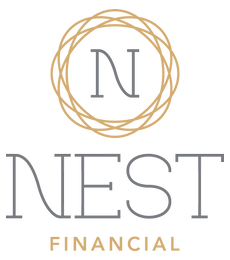As a small business owner, you’ve got a lot on your plate. You have to juggle managing your business, growing it, and even working it. Then there’s life admin, family, self-care, that 10k you signed up for…Time and energy are taxed to the limit in the service of growing your small business. You juggle so many competing priorities, and when you’re feeling the pinch, one of the first things to slip can be that pesky, yet vital, cash flow tracker.
It’s one of the zillion things on your daily to-do list — and it should be. Right near the top. Because though it’s challenging to keep on top of it everyday, slacking on cash flow can be a costly oversight.
You’ve heard of the rubber balls and glass balls we all juggle? For your small business, cash flow is a glass ball. Consistently and effectively managing the inflow and outflow of your business’s money is the key to, well, staying in business.
If managing your cash flow as a small business owner has been a challenge you, consider the following indicators that may hint you have a cash flow problem:
- Inability to make business purchases due to lack of cash
- Excessive amounts of short-term debt, such as accounts payable, taxes or employee wages
- Struggling to make payment deadlines
- Outstanding receivables
- Excessive or obsolete inventory
If alarm bells are going off for you, read on for three steps that you can take to be more successful at managing your business’s cash flow:
1. Track Inflows v. Outflows
The names say it all. But for the sake of clarity, let’s define the two.
Inflow refers to money coming into your business. That is, sales of products, services, or proceeds from a loan.
Outflow refers to money going out — purchasing inventory, business expenses or repayment of that loan.
This inflow and outflow is an ongoing process, better known as cash flow. And you must keep track of it.
Simple, right? Sometimes.
Sometimes the stars align and the money coming in covers the money going out, maybe even with a little extra to buy yourself something nice reinvest in your business.
However, most of the time, the timing of when money comes versus when it needs to go out can be one of the biggest challenges for small business owners. There are yearly cycles of feast and famine, or some version thereof. But even businesses with a steadier model may face leaner times of the year when the cash supply doesn’t quite meet the cash demand.
This is where a cash flow statement comes into your strategy. Put simply, cash flow statements track your business’s inflow and outflow through operations, investments, and financing.
If you don’t have a cash flow statement yet, start by referencing your balance sheets and P&Ls for the information you’ll need to create one.
Once you have a detailed cash flow statement, you can compare, analyze the current state of your business’s cash flow, and make projections for the coming months and years. It’s much easier to prepare for slow periods if you can project when they’re on their way.
2. Cash Flow Analysis
Once you’ve created your cash flow statement and input your numbers, it’s time to analyze the data in order to extract patterns and make meaningful decisions based on your new understanding.
When performing your inflow analytics, pay attention to credit and accounts receivable and how they affect your cash flow. When you accept a promise to pay at a later date, you are in essence extending interest-free credit to your customers. Ask yourself if your business is in a financial position to offer these types of loans. If you’ve conducted an analysis of your cash flow, you’ll be in a position to answer this question honestly.
If you find that you can extend credit to customers in this way, it’s important that your business have policies in place for how to collect balances on time, and the procedure for handling it when they’re late.
Regarding outflows — a sound strategy of staggering or rescheduling payments or reducing inventory on the shelf can be incredibly helpful, especially during slower periods.
A thorough analysis of your business’s cash flow can provide you with the understanding and foresight to make those kinds of decisions well in advance of when they would need to be implemented.
Mismanaging either inflow or outflow can lead to negative cash flow. And that’s a no-no. Conducting a thorough analysis of your cash flow and planning accordingly can help keep you in the black and avoid shortfalls which for a small business could be big.
3. Preparing a Budget
You probably already have a personal budget, but it is very helpful to have one for your business as well. Not only do budgets help you stick to daily money management decisions, they can also help with planning for the growth and expansion of your business. Especially when coupled with the cash flow analysis you performed after reading step two.
Your budget can be basic or extremely detailed. You can use a template or design your spreadsheet magnum opus on Excel. It can provide monthly breakdowns of your cash flow. It can give you daily or weekly projections.
Based on the analysis of previous periods’ cash flow, consider making a plan for the coming year — and see if you can stick to it.
First things first: forecast next year’s sales (inflow) using a YOY (year over year) comparison. The more years you have the figures for, the better. But even with just one year’s data, or one period’s, you can work out a budget, and adjust it as you get new and better information.
Don’t forget to factor in relevant current events and economic trends. For example, 2019’s numbers looked quite different from 2020’s for most businesses. And as the world opens back up in the wake of the pandemic, this year’s will look quite different from 2021’s.
On to outflow. When forecasting for this, be sure to factor in inventory and other operating expenses, accounts payable, and loan repayment. Not everything is predictable but trying to be as precise as possible will help you avoid shortages later.
All of this starts with good record-keeping. It’s not the most glamorous aspect of being a small business owner, but it is something that without which you diminish your chances of long-term success and growth.
Work/life balance
Most business owners laugh at the very idea.
So much of your blood, sweat and tears go into building a business, especially in those first years, that your business is virtually indistinguishable from your personal life.
The same can be true of your finances. There can be a lot of overlap as you work out how to pay yourself, your employees, pay your personal and business taxes, and even cover those business shortfalls from your personal savings.
That’s why, whether you’re just starting your small business or have found some success and are ready to scale, you need a personal financial plan that encompasses your business needs and goals.
That means working with a financial planner that understands the unique needs of a small business owner, such as access to cash flow to grow your business and a retirement plan that invests in your business as a retirement asset.
Your financial planner should offer a comprehensive and customized financial plan. One that understands that the person and the entrepreneur are one and the same.
If you’re ready to get your hands dirty and dig into your cash flow with a financial advisor who understands your needs as a small business owner, why not schedule a no-obligation call with ours?
At NEST Financial, our passion is helping Austin, Hill Country, Texas, and nation-wide small business owners, founders and entrepreneurs succeed. It is our mission to strengthen your personal and business financial plans so you can focus on what you’re best at — growing your business.
Find us on:
LinkedIn Facebook Yelp Twitter
DISCLAIMER: We are legally obligated to remind you that the information and opinions shared in this article are for educational purposes only and are not financial planning or investment advice. For guidance about your unique goals, drop us a line at info@nestfinancial.net.






[…] Cash flow analysis – We look at where your money is going and help you build a budget to optimize the flow. Sometimes people aren’t sure where their money is going, and that’s okay. We’re here to help. […]
[…] In order to understand the financial health of your business, you have to run projections every month, or at least every quarter. Using a bookkeeper helps you accurately understand what money is coming in and going out. […]
[…] February 9, 2023If you read our blog 3 Steps for Managing Cash Flow as a Small Business Owner, then hopefully you have already managed to report steady profits by (1) tracking your inflows […]
[…] A business budget should include estimates of income and expenses, cash flow forecasts, capital investment plans, and financial goals. A budget should also account for […]